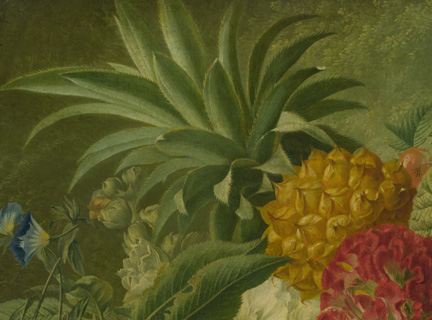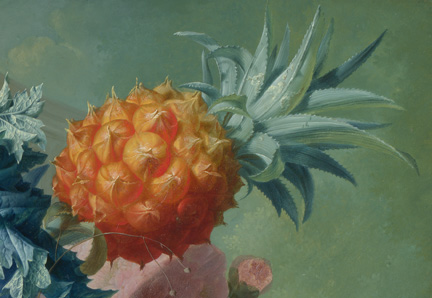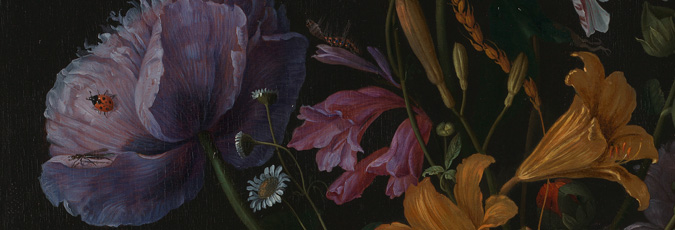Pineapples
In 1640, John Parkinson, Royal Botanist to Charles I, described the pineapple as: "Scaly like an Artichoke at the first view, but more like to a cone of the Pine tree... being so sweete in smell... tasting... as if Wine, Rosewater and Sugar were mixed together" ('Theatrum Botanicum').

Although common today, the pineapple was quite exotic to Europeans in centuries past. Indigenous to South America, pineapples were first brought to Europe in the late 15th century. In the 17th century, Dutch West India Company traders brought seeds, cuttings, and fruit of the pineapple plant to northern Europe from the Dutch colony at Surinam. The long voyage from the New World meant that the fruits rarely arrived in edible condition, but seeds and cuttings offered hope of propagation.
By the late 17th century, Europeans were seized by a veritable mania for growing this tropical delicacy. The Dutch were pioneers in pineapple cultivation. In 1658, a wealthy Leiden merchant devised an innovative hothouse system that provided the warm temperatures and high humidity needed to produce the fruits.

Although by the early 18th century pineapples could be successfully grown in Europe, the high demand and low supply meant that they were a luxury affordable only to the very wealthy. To offer pineapple to guests was a sign of great hospitality. Its presence was not only an indicator of owners’ wealth, but also a testimony to their gardeners’ skill and experience. Curious, costly, and exotic, pineapples were the crowning glory of numerous fruit and flower still lifes by Jan van Os, Wybrand Hendriks, and other 18th-century Dutch artists.

